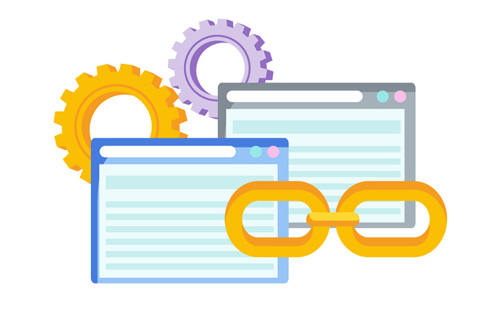Whether you’re involved in the world of SEO or not, everyone has had the experience of scrolling through a page on the internet and coming across those underlined blue phrases. Have you ever wondered what those are? Or how interlinks impact SEO? Let’s dissect the importance of anchor text together—and learn the seven types along the way!
What is Anchor Text?

Anchor text is the words and phrases within content that appear underlined or highlighted and can be clicked to open a separate web page. Typically, these phrases will appear in a different color or alternative way to entice readers to click on them. When you write with anchor text, the words you choose for the link have to be specific and clear so readers know exactly what they’re about to click on.
Why Does Interlinking Matter for SEO?
Interlinking is one of the most important elements of SEO. The presence of links helps legitimize your website and its content to search engines, affecting your ranking. Both internal links to other pages within your blogging and product and collections descriptions and external links are important in determining the success of your content.
On top of that, successful anchor text and interlinking help your relationship with users. Choosing clear phrases and using optimized keywords for your anchor text helps your readers trust the link they intend to click on, whether it’s products or another resource. When you write misleading anchor text, that trust is harder to earn.
7 Important Types of Anchor Text:

1. Exact Match: when your anchor text is the exact keyword or phrase you’re trying to rank for.
2. Phrase Match: when the anchor text uses the keyword and additional words before or after to make the phrase seem more natural within the content.
3. Partial Match: The anchor text utilizes a portion of the target keyword phrase to give variation to your blog.
4. Title: anchor text made up of the written title of the page you’re linking to, whether it’s an article, like reasons why site speed matters for SEO, a product, or home page.
5. Brand: The anchor text is the brand’s name you’re trying to link to, such as eBay or Target.
6. Navigational: the links that are on the main page of your website to help a reader navigate to other pages, such as MooseMay.
7. Natural: a more generic form of anchor text that is not SEO optimized but gives context to readers should they want more information on a topic.
How Many Interlinks Should Content Have?

With the many and everchanging types of anchor texts and interlink options, it’s easy to feel overwhelmed. Unfortunately, there’s no set requirement for the number for interlinking—it depends entirely on your marketing strategy. We recommend starting with an expected 8-10 links per 1,000 words!
The next time you write, we encourage you to play around with all seven types of anchor text. Interlinking is a vital step in optimizing for SEO—so we might as well learn how to use it!
